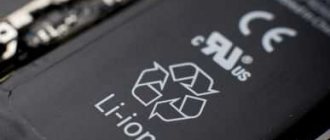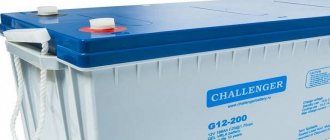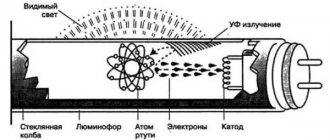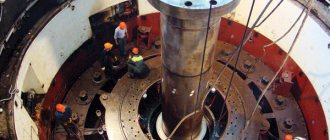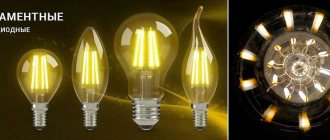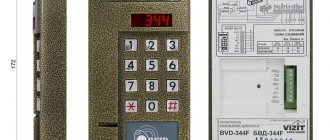Those who are thinking about assembling an electric bicycle with their own hands often face the question of choosing the type of battery. And the first thing that comes to mind is to use a lead-acid battery. The reasons for this choice are obvious at first glance - low cost and simplicity of design (no BMS control board required).
However, there are compelling arguments that may encourage you to abandon the use of a lead battery in favor of a lithium-ion battery. Let's look at them in order.
Weight difference
It is no secret that lead batteries weigh more than lithium-ion batteries, but this is often not given importance, prioritizing the cost advantage. However, for an e-bike, the low weight may be more important than the price, since you will be carrying it up and down stairs (perhaps even every day), and sometimes loading it into a car for transport.
In addition, the additional weight does not have the best effect on the dynamics of acceleration and braking. More weight means higher inertia and more wear on the brake pads. Also, the use of heavy lead batteries increases the load on the frame and suspension system of the bicycle.
Consider, for example, a 36 V battery with a capacity of 7-7.5 Ah. The lead-acid version consists of three 12 V 7Ah batteries connected in series, and the lithium-ion version consists of 30 18650 2500 mAh cells and a BMS board, weighing about 100 grams.
| Battery type | Lead acid | Lithium-ion |
| Item characteristics | 7 Ah 12V 2.3 kg | 2.5 Ah 3.6 V 0.05 kg |
| Assembly diagram | 3S1P (3 elements) | 10S3P (30 elements) |
| Battery Specifications | 7 Ah 36 V | 7.5 Ah 36 V |
| Control board | Not required | BMS 10S 0.1 kg |
| Finished battery weight (without housing) | 6.9 kg | 1.6 kg |
The table shows that the weight of a lead battery exceeds the weight of a lithium-ion battery by more than 4 times, and this difference will affect the performance characteristics of the bicycle, including the power reserve on a single charge.
It is also worth considering that if you forgot to charge the battery before the trip, returning to the pedals with lead on board will be much harder.
Energy Density
Lithium-ion batteries are several times more energy dense than lead batteries. In our case, the lead-acid battery has an absolute capacity of 252 Wh (7 Ah * 36 V) and weighs 6.9 kg. That is, the energy density is 36.5 Wh/kg.
At the same time, a lithium-ion battery with an absolute capacity of 270 Wh (7.5 Ah * 36 V) weighs 1.6 kg, that is, its energy density is 168 Wh / kg, which is more than 4 times higher than the value of a lead battery .
Lithium iron phosphate batteries have a number of advantages:
Long service life.
The battery life is a record number of cycles - up to 5000. Li-ion batteries last 3 times longer. (Lead-acid has 1000-1500 cycles).
Completely maintenance-free battery.
The battery does not require any maintenance during its entire service life.
Ultra-fast charge.
An important feature of lithium iron phosphate batteries is their ability to charge at high current. Thanks to this, the battery can be fully charged in less than 2 hours, which allows you to get by with one set, even at the highest level of equipment load. And in just 20 minutes by 25% of the nominal capacity.
Recharge anytime.
Lithium-ion batteries do not have a memory effect, so they can be recharged at any time by the driver of the equipment.
Fast charging speed and absence of memory effect allow you to optimize the used battery capacity at a price. In this case, equipment is charged directly in the warehouse only during natural breaks in the work of equipment operators.
An alternative to lead-acid tanks when loading equipment up to 18 hours per day
In other words, one Li-ion battery can replace 2 acid or gel batteries.
Harmlessness and safety.
The battery is completely sealed and has no toxic or corrosive emissions under any operating mode or charge.
The built-in protection system completely protects the battery from abnormal operating conditions. Savings on maintaining a charging room and additional staff. The absence of hydrogen emissions eliminates the need to build a charging room, maintain additional personnel and equipment for maintenance.
Ease of use.
The Li-ion battery can be charged directly in the production area from the mains. Charging does not require removing the battery from the forklift.
Trouble-free operation at any temperature
Lithium-ion batteries can be used in a wide temperature range from -40 to +50 Сo. They are therefore ideal for refrigeration applications since, unlike lead-acid batteries, the usable capacity decreases by less than 10% at temperatures between 0 and -30 °C.
Dependence of performance characteristics on temperature
No voltage drop.
The useful power of a Li-Ion battery is significantly higher due to the absence of voltage drop as the battery discharges. As the lead batteries discharge, the voltage drops noticeably, from 48 to 40 V, which effectively means an increase in current to maintain the required drive power.
Voltage drop effect
Capacity conservation
The loss of capacity during the service life of lithium-ion batteries is significantly less compared to acid batteries.
The absolute equivalent of a 500 amp-hour lead-acid battery is a 300 amp-hour lithium ion battery.
Matching the capacity of lead-acid and lithium-ion batteries
And also a number of other advantages:
- High efficiency.
- Can be stored in a discharged state.
- Discharge up to 10% of rated capacity.
- Charger 220V.
Battery device.
Li-ion batteries use lithium iron phosphate (LiFePO4) cells to store energy. This type of element has proven itself to be a reliable and economical source of energy.
Battery charge.
An important feature of lithium iron phosphate batteries is their ability to charge at high current, which allows the battery to be fully charged in less than 2 hours. The absence of a memory effect also allows for fractional charge cycles of any duration at any charge level. Fractional charging extends battery life. The battery is recharged during a technical or lunch break from a power source.
The lithium battery charge level indicator can be located on the battery itself
and separately on the loader instrument panel
Service life and maintenance
When a battery is used, its capacity gradually decreases, and the rate of this decrease depends on several factors, including the depth of discharge, operating temperature, and others.
The service life of the battery, subject to the rules of its storage and operation, is determined by the number of charge-discharge cycles. For lead-acid batteries, this characteristic is in the range from 200 to 1000 cycles, for lithium-ion batteries - in the range from 1000 to 4000 cycles.
In addition, lead batteries have higher self-discharge and require periodic maintenance - recharging and adjusting the electrolyte density. Lithium-ion batteries require virtually no maintenance, since the balancing function, that is, equalizing the voltages on the cells, is performed by the battery management board (BMS, Battery Management System).
Types, sizes of lithium-ion batteries
Lithium-ion batteries are widely used in various household devices, electric cars, tablets and other types of modern gadgets.
There are also industrial Li-Ion batteries with high capacity and high voltage. Below in the table we give examples of batteries that are more in demand on the market:
In addition to cylinder-shaped batteries, there are other product shapes. These include: “Krona” with U=9 Volt and more powerful industrial batteries with U=12 V, U=24 V, U=36 V, U=48 V.
The markings on the battery case indicate the elements that are added to the battery.
For example:
- if it reads ICR, it means the battery contains cobalt;
- IMR marking means the addition of manganese to the composition;
- INR - talks about nickel with manganese in the battery;
- NCR - notifies about a “portion” of nickel and cobalt in the battery.
It is not only the size and chemical additives that distinguish lithium-ion batteries from each other, but also the voltage capacity. They help determine for which electrical device the battery is made.
Charge current and full charge time
The optimal charging current for lead-acid batteries is considered to be a current equal to 10% of the battery capacity in ampere-hours (0.1C), that is, in the case discussed above, with a capacity of 7 Ah, the optimal charging current will be 0.7 A. When fast charging, a current of 0 is allowed ,2C (in our case 1.4 A). In both cases, towards the end of the charging process, this current must be reduced.
For lithium-ion batteries, the charging current ranges from 0.2C to 1C (with fast charging), that is, with a battery capacity of 7 Ah, it will be from 1.4 A to 7 A. Charging is carried out first with direct current, and then, with reaching the upper voltage, the current gradually decreases.
In most cases, it takes 8-16 hours to fully charge a lead-acid battery, while charging a lithium-ion battery takes only 2-4 hours. This time advantage allows you to significantly recharge the lithium-ion battery even while stopping at a cafe for lunch if you go on a long trip.
Effect of high temperatures
When used at high temperatures, the battery rapidly degrades. But what is meant by the concept of high temperature and where does it come from?
When a load is connected to the battery, for example, in the form of an electric bicycle motor, current begins to flow through it. Each battery has its own internal resistance. Accordingly, the flow of current leads to gradual heating of the battery - of course, depending on the current strength. The more powerful the load (higher the current), the faster the heating occurs.
If the load is too high for a given battery, it heats up quite quickly, and the process of accelerated degradation begins. The result of this process is a significant reduction in the battery capacity, and as a result, the need for its subsequent replacement.
For a lead battery, degradation begins when the temperature exceeds 25 degrees, for a lithium-ion battery - when it exceeds 45 degrees Celsius.
Production of lithium-ion batteries
The principle of manufacturing Li-Ion batteries occurs in stages:
- first, electrodes are made;
- they are then combined into a battery;
- then the board and protection are installed;
- then the battery is placed in the case;
- electrolyte is poured;
- The battery is tested and sent for charging.
In order for the product to become of incredibly high quality and not subsequently fail in its performance, it is necessary to strictly adhere to all stages of the production technology, and also not to forget about safety precautions during the work process.
The (-) electrode in a Li-ION battery is foil, the surface of which is coated with a Li substance.
Depending on the purpose for which the Li-ion battery is intended, it will contain the following Li-Ion connections:
In “finger (AA)” and “little finger (AAA)” batteries, the cathode (-) is in the form of a roll and separated from the anode (+) using a separator.
With a large area of the negative electrode covered with a thin film, the energy capacity of the battery becomes significantly higher.
